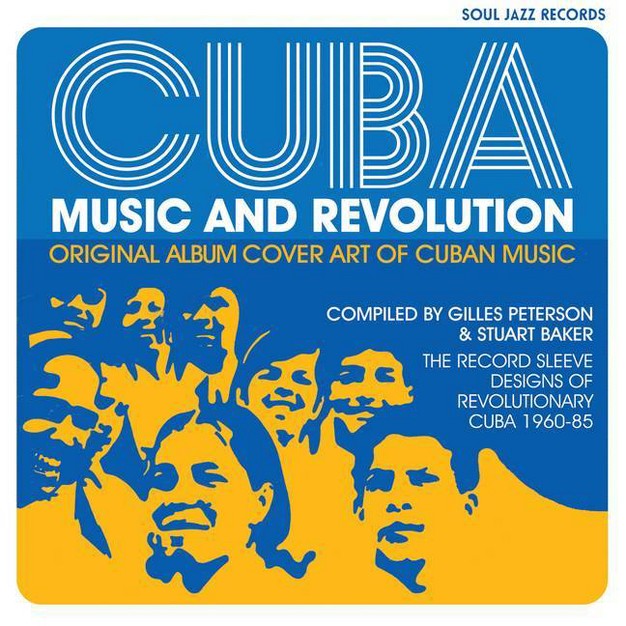About the Book
The first ever book about Cuban record sleeve design, compiled by Gilles Peterson and Stuart Baker, Cuba: Music and Revolution features hundreds of rarely seen vinyl records from the start of the Cuban Revolution at the beginning of the 1960s up until 1985, when Cubas Special Period, brought about by the dissolution of the Soviet Union and the withdrawal of Russias financial support for the Cuban government, led to the demise of vinyl-record manufacturing in Cuba. The artwork here reflects both the cultural and musical depth of Cuba as well as the political influence of revolutionary communism. Over the past century, Cuban music has produced a seemingly endless variety of styles--rumba, mambo, son, salsa--at a dizzyingly fast rate. Since the 1940s a steady stream of Cuban musicians has also made the migration to the US, sparking changes in North American musical forms: bandleader Machito set New Yorks jazz and Latin scene on fire, and master drummer Chano Pozos entry into Dizzy Gillespies group led to the birth of Latin jazz, to name just two. After the Cuban Revolution in 1959, the new government closed American-owned nightclubs and consolidated the islands recording industry under a state-run monopoly. Out of this new socialist agenda came new musical styles, including the Nueva Trova movement of left-wing songwriters. The 1980s saw more experimentation in modernist jazz, salsa and Afro-Cuban folkloric music. Generously illustrated with hundreds of color images, Cuba: Music and Revolution presents the history of Cuban record cover art, including many examples previously unseen outside the island itself.--Provided by publisher.Book Synopsis
Spanning Cuban music from rumba to salsa, and graphic styles from socialist realist to geometric abstraction, this volume of Cuban record cover art traces a musical form in constant revolution.
The first ever book about Cuban record sleeve design, compiled by Gilles Peterson and Stuart Baker, Cuba: Music and Revolution features hundreds of rarely seen vinyl records from the start of the Cuban Revolution at the beginning of the 1960s up until 1985, when Cubas Special Period, brought about by the dissolution of the Soviet Union and the withdrawal of Russias financial support for the Cuban government, led to the demise of vinyl-record manufacturing in Cuba. The artwork here reflects both the cultural and musical depth of Cuba as well as the political influence of revolutionary communism.
Over the past century, Cuban music has produced a seemingly endless variety of styles--rumba, mambo, son, salsa--at a dizzyingly fast rate. Since the 1940s a steady stream of Cuban musicians has also made the migration to the US, sparking changes in North American musical forms: bandleader Machito set New Yorks jazz and Latin scene on fire, and master drummer Chano Pozos entry into Dizzy Gillespies group led to the birth of Latin jazz, to name just two. After the Cuban Revolution in 1959, the new government closed American-owned nightclubs and consolidated the islands recording industry under a state-run monopoly. Out of this new socialist agenda came new musical styles, including the Nueva Trova movement of left-wing songwriters. The 1980s saw more experimentation in modernist jazz, salsa and Afro-Cuban folkloric music. Generously illustrated with hundreds of color images, Cuba: Music and Revolution presents the history of Cuban record cover art, including many examples previously unseen outside the island itself.Review Quotes
Gilles Peterson discusses a new book he helped co-edit about Cuban record sleeve design, which traces a musical form in constant revolution.--Miss Rosen Huck
Dimensions (Overall): 11.9 Inches (H) x 11.9 Inches (W) x .9 Inches (D)
Weight: 5.45 Pounds
Suggested Age: 22 Years and Up
Number of Pages: 256
Genre: Music
Sub-Genre: Genres Styles
Publisher: Soul Jazz Records
Theme: Latin
Format: Hardcover
Author: Stuart Baker Gilles Peterson
Language: English



Comment